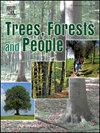Climate change impact on the distribution and priority areas for conservation of Sterculia setigera Delile in Benin, West Africa
IF 2.9
Q1 FORESTRY
引用次数: 0
Abstract
Climate change poses a major threat to species distribution and habitat loss, while also contributing to biodiversity decrease. Understanding these effects along climatic gradients is crucial for guiding conservation and mitigating declines. In this context, this study aims to assess the impact of climate change on the distribution of Sterculia setigera Delile, a widespread species with significant socio-economic value found in different climate zones of Benin. Given the heterogeneity of environmental conditions in Benin, a crucial question remains: how does climate change affect each S. setigera population group? And what are the priority areas for S. setigera conservation? To address these questions, we subjected each subgroup to species distribution modeling (SDM) using the maximum entropy algorithm (MaxEnt). This approach was applied under Shared Socioeconomic Pathways (SSP 2–4.5) and SSP 5–8.5 climate scenarios. A test of niche similarity between the groups was performed to assess their level of conservatism. Habitat prioritization was performed using Zonation software. Our results showed three distinct homogeneous subgroups (north-SN, center-SC and south-SS) with differentiated climatic conditions. SN was affected mainly by mean temperature of the warmest quarter, SS by precipitation of driest month, isothermality and minimum temperature of coldest month, while SC by elevation, temperature Seasonality and mean temperature of coldest quarter. Current climatic conditions were suitable for S. setigera in all climate zones. Under future climate scenarios SSP 2–4.5 and SSP 5–8.5, SN increased, while SC decreased. The SS subgroups, showed a decrease in suitable conditions under the SSP 2–4.5 scenario but an increase under the SSP 5–8.5 scenario. However, among the subgroups there was niche differentiation, leading to the emergence of ecotypes. The protected area was prioritized for the conservation of S. setigera in Benin. Therefore, future research should investigate further genetic and trait variation aspects within subgroups to confirm the existence of ecotypes.
气候变化对西非贝宁塞蒂格拉斯特利亚分布和优先保护区域的影响
气候变化对物种分布和栖息地丧失构成重大威胁,同时也导致生物多样性减少。了解沿气候梯度的这些影响对于指导保护和减缓衰退至关重要。在此背景下,本研究旨在评估气候变化对贝宁不同气候区具有重要社会经济价值的广布物种Sterculia setigera Delile分布的影响。考虑到贝宁环境条件的异质性,一个关键的问题仍然存在:气候变化如何影响每一个塞蒂格拉种群?在哪些地区应该优先保护塞蒂格拉?为了解决这些问题,我们使用最大熵算法(MaxEnt)对每个子群进行物种分布建模(SDM)。该方法在共享社会经济路径(SSP 2-4.5)和SSP 5-8.5气候情景下应用。对各组之间的生态位相似性进行了测试,以评估他们的保守性水平。利用zoning软件进行生境优先排序。研究结果表明,在不同的气候条件下,有3个明显的同质亚群(北-南、中-南和南-南)。SN主要受最暖季平均气温的影响,SS主要受最干月降水、等温线和最冷月最低气温的影响,SC主要受海拔、温度季节性和最冷季平均气温的影响。当前气候条件下,各气候带均适宜采草。在SSP 2-4.5和SSP 5-8.5气候情景下,SN增加,SC减少。在SSP 2-4.5的适宜条件下,SS亚组呈下降趋势,而在SSP 5-8.5的适宜条件下,SS亚组呈上升趋势。但各亚群之间存在生态位分化,导致生态型的出现。该保护区是贝宁塞提格拉的优先保护区。因此,未来的研究应进一步研究亚群内遗传和性状变异方面,以确认生态型的存在。
本文章由计算机程序翻译,如有差异,请以英文原文为准。
求助全文
约1分钟内获得全文
求助全文
来源期刊

Trees, Forests and People
Economics, Econometrics and Finance-Economics, Econometrics and Finance (miscellaneous)
CiteScore
4.30
自引率
7.40%
发文量
172
审稿时长
56 days
 求助内容:
求助内容: 应助结果提醒方式:
应助结果提醒方式:


